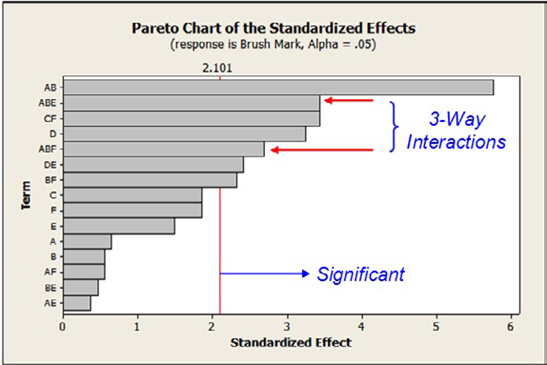Ford Motor Company is one of the largest automakers in the United States, producing millions of automobiles each year at 70 plants worldwide. According to J. D. Power and Associates Initial Quality Survey, Ford has received more top rankings than any other automaker since 2007. It’s no surprise that high quality standards have kept Ford an industry leader since 1903. And Ford knows that quality begins at a vehicle’s launch. When a cosmetic problem with the vehicle’s carpet threatened the impending launch of the 2011 Ford Fiesta, the company’s Body Interior Six Sigma team saw a clear opportunity for quality improvement through proven optimization methods. In their quest to maintain high customer satisfaction and performance, the team used Minitab Statistical Software to help them eliminate the carpet defect and achieve a successful launch.
The Challenge
The launch date for the Fiesta was quickly approaching when Ford determined that the appearance of brush marks on vehicle carpets would be unacceptable to customers. Ford’s Body Interior Six Sigma team, led by Six Sigma Master Black Belt Scott Sterbenz, began by working with the supplier to analyze the process used to manufacture the automotive carpet. They found that the settings of a machine called a needler were the likely cause of the diminished product quality.

Ford Motor Company improved the quality of the carpets in the Ford Fiesta with the help of Minitab Statistical Software.
But the manufacturer worried that altering the needler’s settings also would affect the plushness of the carpet. The team needed to find process improvements that would eliminate brush marks while maintaining the plushness, and they also needed to consider other critical qualities, like the carpet’s durability and stain resistance. As they set out to complete the daunting task of improving carpet quality in the Fiesta, the quality improvement experts turned to the Design of Experiment (DOE) tools in Minitab Statistical Software.
How Minitab Helped

Organization
Ford Motor Company
Overview
- Founded in 1903
- Headquartered in Dearborn, Mich. with 70 plants worldwide
- More than 164,000 employees
Challenge
Identify and fix the manufacturing process of carpets to eliminate brush marks
Products Used
Minitab® Statistical Software
Results
- A complete elimination of brush markings
- An unexpected improvement in the softness of the carpet
- A successful, high-quality launch of the Ford Fiesta





